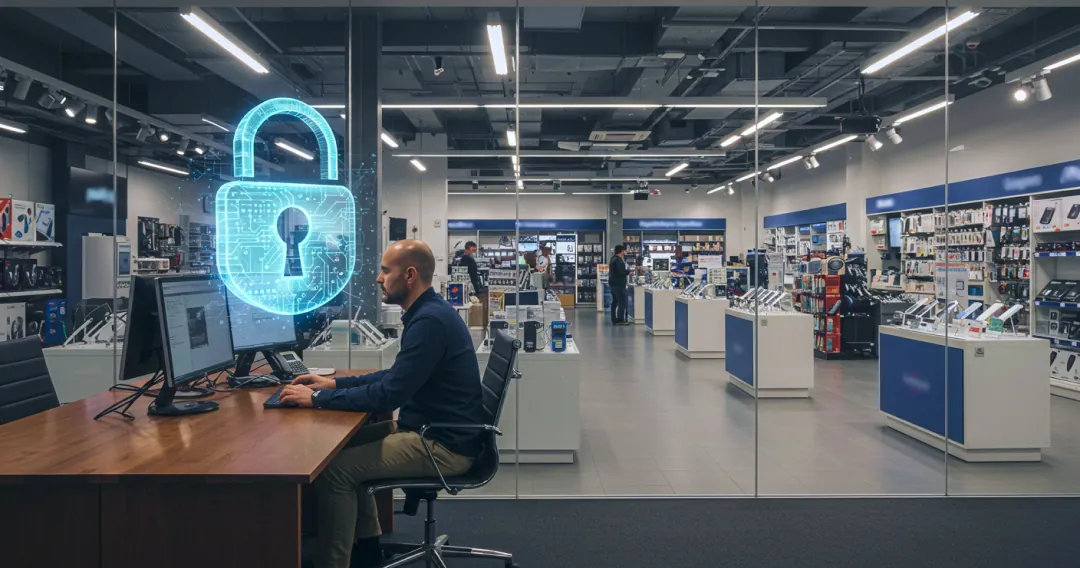Key Takeaways:
-
- Modern DLP (Data Loss Prevention) focuses on safeguarding sensitive data in retail by preventing unauthorized access or loss.
- Retailers face unique challenges, such as protecting customer information, financial data, and compliance with privacy laws.
- Effective DLP strategies combine technology, employee training, and clear policies to mitigate risks.
- Integrating DLP with platforms like ThinkLP can provide a more comprehensive view of risks and losses.
What Does Modern DLP Mean for Retail?
Modern DLP refers to the tools and strategies used to prevent sensitive data from being accessed or shared without authorization. Unlike traditional security measures that focus on perimeter defenses like firewalls, modern DLP works by monitoring how data is used, moved, and stored across an organization. For retailers, this means keeping customer payment details secure during transactions, ensuring employee records are protected from unauthorized access, and preventing accidental sharing of sensitive business information.
Retailers also face challenges unique to their industry. The rise of e-commerce has increased the volume of sensitive customer data being processed online. Additionally, many retailers rely on third-party vendors for logistics or payment processing, which can introduce vulnerabilities. Modern DLP addresses these risks by providing visibility into where sensitive data resides and how it’s being used.
The Importance of Modern DLP in Retail
Retailers are prime targets for cybercriminals due to the high value of customer payment data and personal information they collect. A single breach can result in significant financial losses from fines, lawsuits, or operational downtime—not to mention damage to customer trust. Beyond external threats, insider risks such as employee negligence or intentional misuse also pose a challenge.
Modern DLP helps retailers:
-
- Protect Customer Information: Safeguarding payment details and personal data builds trust and ensures compliance with privacy regulations like GDPR or CCPA.
- Prevent Data Breaches: By monitoring how data moves within systems and across networks, DLP can detect suspicious activity before it leads to a breach.
- Reduce Insider Risks: Whether intentional or accidental, insider threats are mitigated through policies that restrict access to sensitive information based on roles or responsibilities.
- Ensure Compliance: With increasing regulatory requirements around data protection, modern DLP ensures that businesses meet legal obligations while avoiding costly penalties.

Key Components of Modern DLP
Modern DLP solutions typically include three core components:
1.Data Discovery: Identifying where sensitive information is stored across systems (on-premises or cloud-based) is the first step in securing it. This includes classifying data based on its sensitivity—such as payment card details versus general business documents—to prioritize protection efforts effectively.
2.Data Monitoring: Once sensitive information is identified, monitoring tools track how it’s accessed or shared within the organization. For example, a retailer might monitor attempts to download large amounts of customer data onto external devices or email accounts.
3.Prevention Policies: Based on insights from monitoring tools, businesses can create rules to prevent unauthorized actions—such as blocking an employee from sending confidential files outside the company network or restricting access to certain types of information altogether.
How Can Retailers Implement Modern DLP?
Implementing modern DLP requires more than just installing software—it involves creating a culture of awareness around data protection throughout the organization. Here are some practical steps:
1. Assess Your Data Risks: Start by identifying what types of sensitive information your business handles (e.g., credit card numbers or employee records) and where they’re stored (e.g., POS systems or cloud platforms). Understanding these risks helps prioritize which areas need immediate attention.
2. Set Clear Policies: Develop clear guidelines for how sensitive information should be handled across your organization—for example, limiting who can access certain files or restricting the use of external storage devices like USB drives.
3. Invest in Technology: Choose a modern DLP solution that fits your business needs—whether it’s focused on endpoint protection (e.g., preventing unauthorized downloads) or network-level security (e.g., monitoring email traffic for confidential attachments).
4. Train Employees: Educate staff on why protecting sensitive information matters—not just for compliance but also for maintaining customer trust—and provide practical tips for avoiding common mistakes like falling victim to phishing scams.
5. Monitor Continuously: Data protection isn’t a one-time effort; regular audits ensure that policies remain effective as new threats emerge or business operations evolve over time.
How ThinkLP Supports Risk Management
For retailers looking to integrate their loss prevention efforts with modern DLP strategies, ThinkLP provides a centralized platform that consolidates incident reporting, case management, and analytics into one system. By connecting ThinkLP with existing DLP solutions, businesses gain a more comprehensive view of risks—combining insights from cybersecurity incidents with traditional loss prevention metrics like theft or fraud trends.
This integration not only enhances visibility but also enables cross-departmental collaboration between IT teams managing cybersecurity risks and LP/AP teams focused on physical losses—helping businesses address threats holistically rather than in silos.
Final Thoughts
Modern DLP isn’t just about preventing cyberattacks—it’s about creating a secure environment where customers feel confident sharing their information and employees understand their role in protecting it. For retailers handling large volumes of sensitive data daily—from online transactions to vendor communications—a proactive approach to data loss prevention is essential.
By combining technology with clear policies and ongoing training efforts across departments like IT and HR, retailers can reduce risks while maintaining compliance with evolving privacy regulations worldwide. When paired with tools like ThinkLP’s centralized platform for risk management insights across both digital and physical domains—modern DLP becomes an integral part of building trust-driven retail operations that prioritize both security and efficiency.
Explore ThinkLP’s Blog
Now that you know about modern DLP, you can find additional insights on loss prevention and safety intelligence on ThinkLP’s blog. The blog features articles, case studies, and industry insights that provide practical tips and strategies for improving your loss prevention efforts.
Request a Demo
If you are interested in how ThinkLP’s software can support your loss prevention initiatives, we invite you to request a demo. Their Loss & Safety Intelligence Platform is designed to integrate with your existing operations, helping you reduce risks and improve efficiency. Reach out today to learn how ThinkLP can assist your organization in optimizing its loss prevention strategy.


